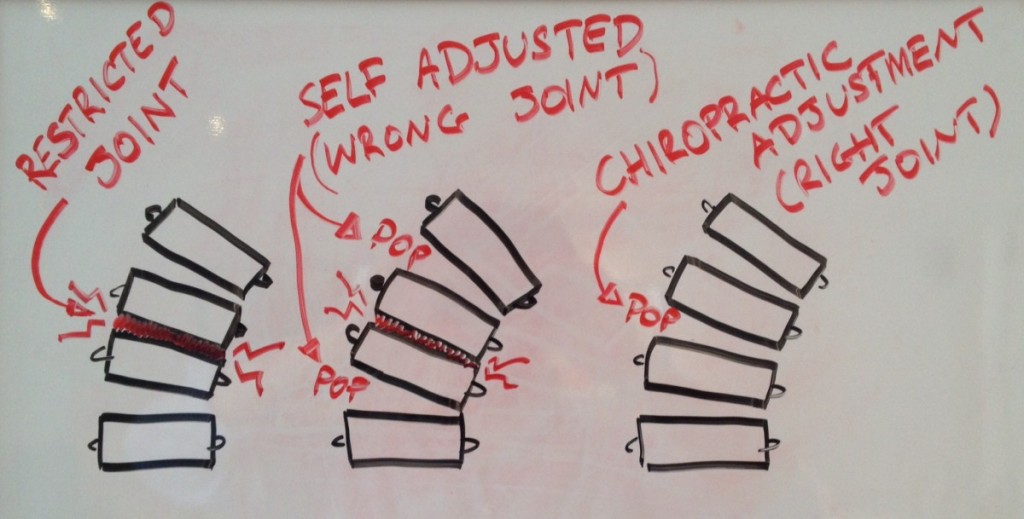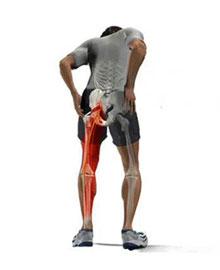Self Manipulating Spine
I click my own neck, what more can a Chiropractor do? Lots of people click their own necks; sometimes for relief, sometimes for dramatic effect, sometime just because they can, often without trying to. But what is the difference between clicking it yourself and a Chiropractor doing it? The need to click one’s own neck is potentially a sign of an underlying problem. Often the need to do it is down to poor posture putting excess stress on the joints in the cervical (neck) spine. Due to the stresses on the spine, the joints become restricted and uncomfortable. If an on-going problem, it may get to the stage of a trapped nerve! When you click your own neck (self manipulating) you are mostly ‘clicking’ either the joint above or below the restricted one that needs to move properly. Chiropractors train over 5 years to adjust the right joint in the right way (see picture below). Is there anything wrong with clicking my own neck? The danger of doing it yourself is you’re clicking the wrong joints. When you self manipulate it may make the same ‘popping’ noise (air being released from the joint) as a Chiropractic adjustment; it might provide some relief, due to the natural release of a pain-relieving chemical called endorphins. But it can cause damage. When a joint is restricted, the joints above and below work harder to compensate for the lack of movement in the stiff joint. So these joints are moving too much already and when you self adjust you are forcing them to move even further (see picture). This can, over time, cause stretching of the ligaments that support the spine and lead to instability and future problems. So what should I do if I always click my own neck? From what we’ve learnt so far, you potentially have an underlying problem and are causing damage to the ligaments of your spine. The first thing is to look at your posture to prevent unnecessary stress on your neck and shoulders. The next thing is to have a full examination with a Chiropractor to assess the movement and function of the individual joints of the spine. The Chiropractor will then be able to recommend stretches, postural advice, and, if necessary, a course of a Chiropractic adjustments to restore the correct movement to the spine.


